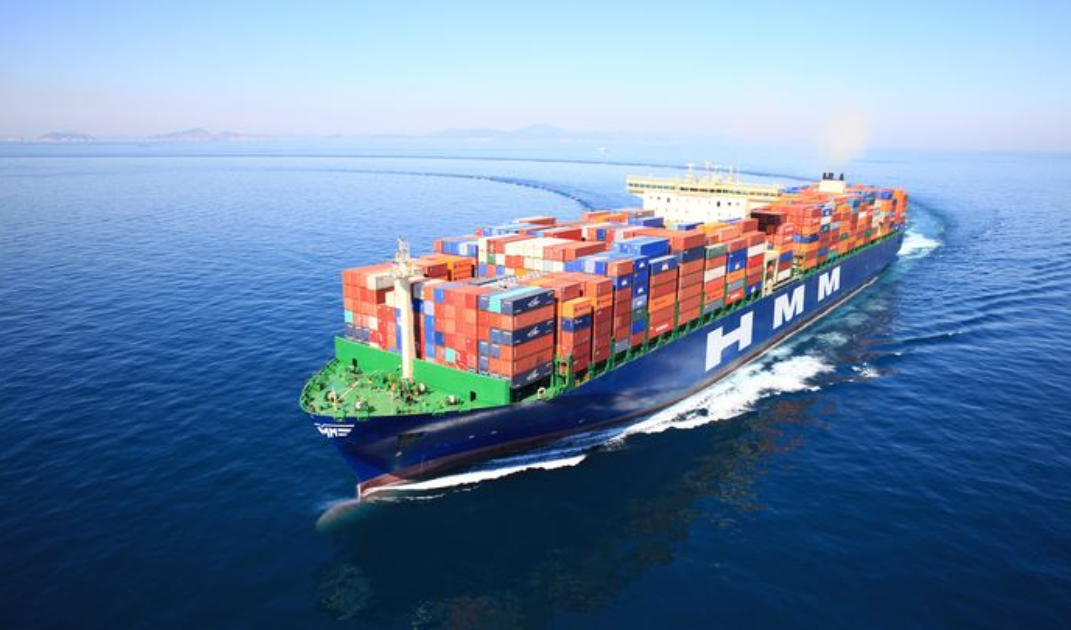Hyundai Merchant Marine (HMM), South Korea’s largest shipping company and the world’s eighth-largest container ship owner, is advancing a series of new container vessel construction projects.

According to TradeWinds, HMM is considering placing orders for a total of 6 LNG dual-fuel container ships ranging from 13,000 to 14,000 TEU with HD Hyundai Heavy Industries and Hanwha Ocean with options for another six vessels. Each vessel is priced between $175 million and $180 million, bringing the total investment for this shipbuilding project to approximately $2.1 billion.
This container ship will be equipped with LNG dual-fuel engines to comply with environmental regulations set by the International Maritime Organization (IMO) and reduce emissions. With a capacity of 13,000 to 14,000 twenty-foot equivalent units (TEUs), it will significantly enhance transportation efficiency on HMM’s main shipping routes.
Although the delivery schedule for the new ships has not yet been finalized, HMM expects delivery as soon as possible. HMM explained the specifications of the new ships, stating: “Given that container ships ranging from 10,000 to 16,000 TEU can easily access various ports and markets, the 13,000 to 14,000 TEU capacity offers high flexibility in global trade.”
Samsung Heavy Industries was also previously under consideration by HMM, but it appears the shipbuilder has now been eliminated from the running after losing out to its competitors.
In addition to large container ships, HMM is proceeding with orders for over 10 feeder container ships ranging from 1,900 TEU to 3,000 TEU from China. Korean shipbuilders had previously competed for this project but were outbid by more competitive Chinese shipbuilders. Benefiting from cost advantages in labor and raw materials, Chinese shipbuilders can build small-to-medium container ships at costs 20% lower than their Korean counterparts.
Feeder container ships are scheduled for delivery in 2027. Subsequently, the ships will be deployed to specific route segments based on demand, primarily serving niche routes in Asia, the Middle East, and Africa. This initiative aims to connect major hub ports with smaller ports, optimize logistics flows, and enhance shipping flexibility.
It is understood that the new shipbuilding projects currently being advanced by HMM form part of the company’s mid-to-long-term strategy for 2030, which was proposed in 2024. The company plans to expand its fleet size, encompassing both container ships and bulk carriers.
In the container ship sector, HMM plans to invest 11 trillion won to expand its container fleet to 130 vessels with a total capacity of 1.5 million TEU. For the dry bulk and tanker sectors, HMM intends to invest 5.6 trillion won to increase its tanker and bulk carrier fleet from the current 36 vessels to 110 vessels.
HMM’s newbuilding projects align with the surge in orders for container ships. Clarkson data shows that from January to August this year, 294 new container ships with a total capacity of 2.7 million TEU were contracted.


